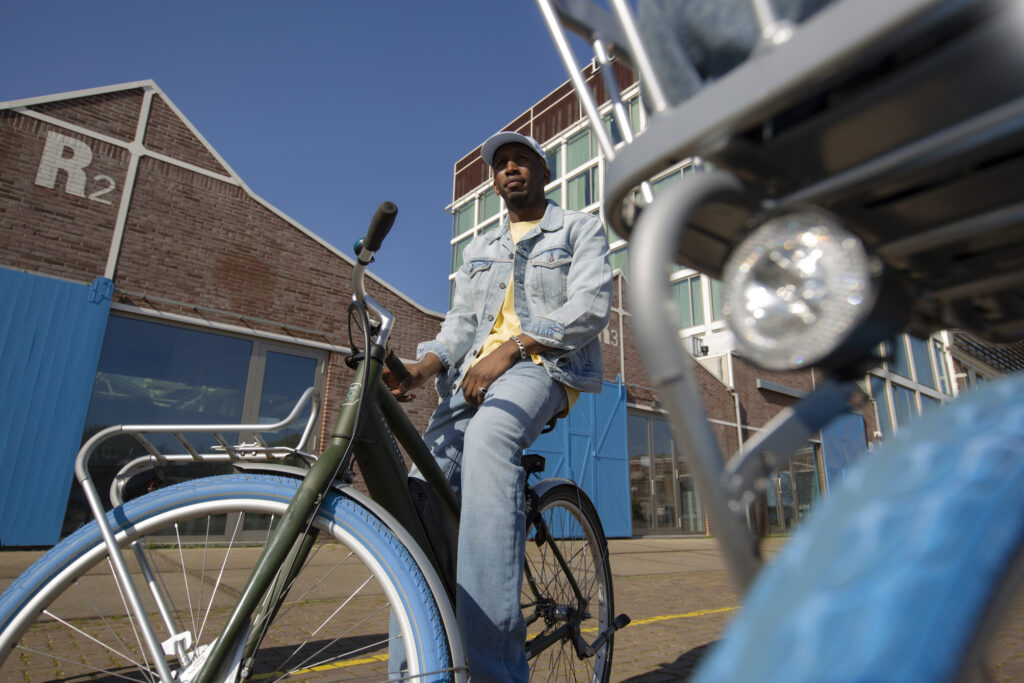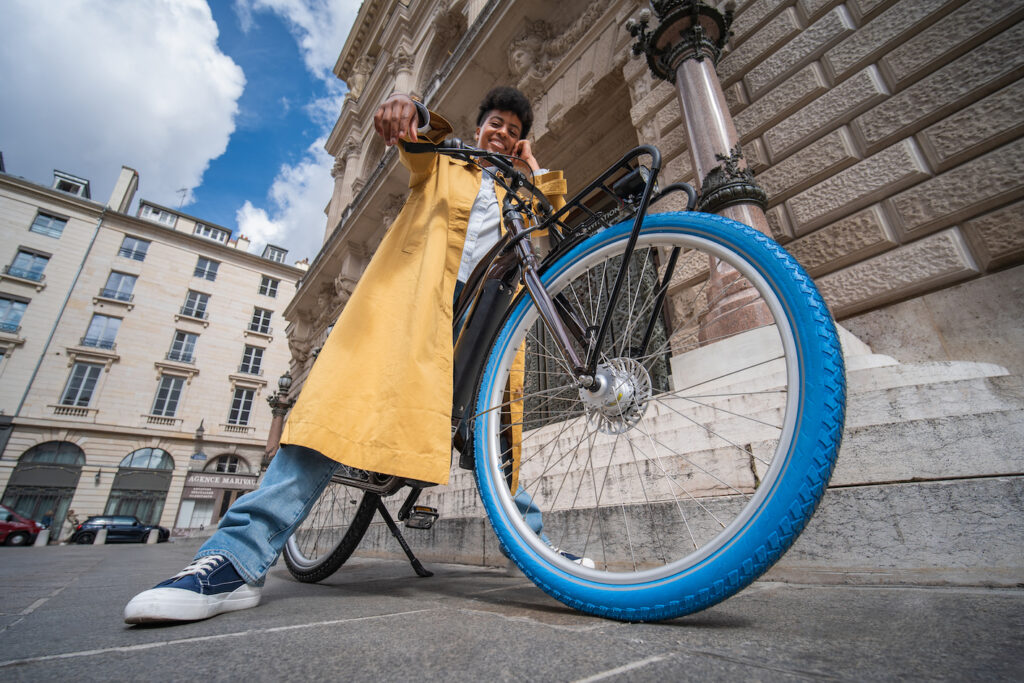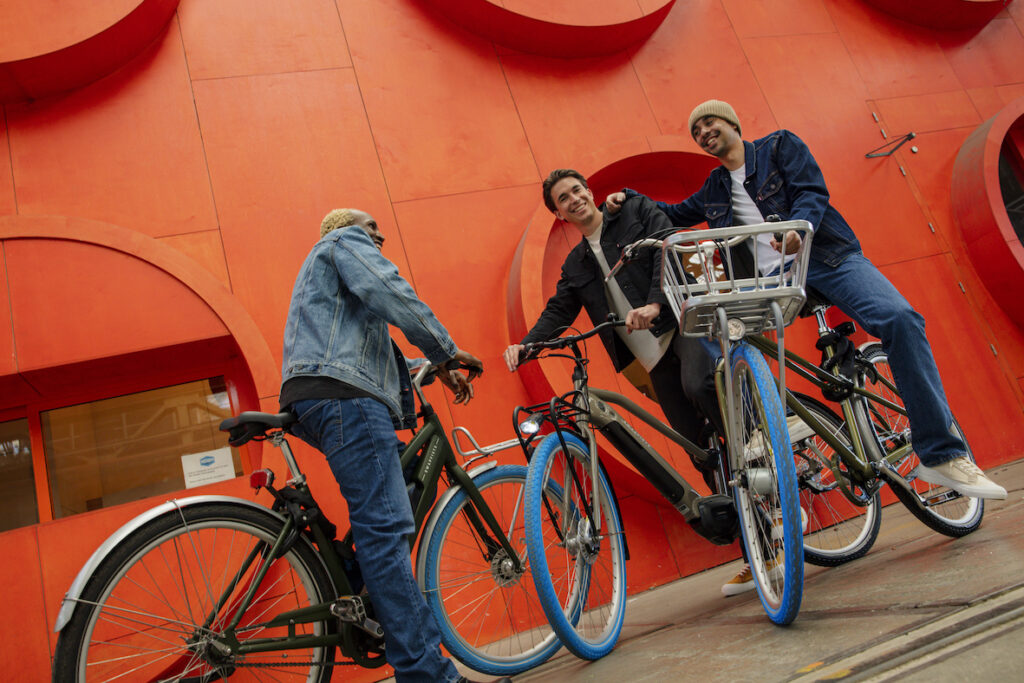Swapfiets was founded in 2014. We’d like to say that we re-founded the company as a B Corp in 2022. In this blog, we’d like to take you on our journey to a 100% circular bike.
We started the company based on the frustration of owning a bike. Seeing the bicycle as the nr. 1 most sustainable transport of moving through the city, we wanted to turn this frustration into the great experience that cycling actually is. We’re able to build a sustainable product because we don’t sell our bikes. This means all service and repairs are on us. As a result you, our member, can have a worry-free ride while we collect insights on how to use our business as a force for good.
Since this B Corp month is about going beyond, we’d like to dive a bit deeper into detail with you.
Our bikes are made to last.

The great thing about using a bike instead of owning it is that it’s in the best interest of our members as well as our business and the environment. Our stakeholders want to see a bike that breaks down as little as possible and lasts the longest as possible. That ensures our members ride a bike of the highest quality, and we, as a business, have lower costs and consume less materials. The sum of this leads to way less environmental impact.
That is why we design high quality parts and bikes that are made to last. Each Swapfiets has its own bicycle passport where we keep track of the status, where it is used, what and how often it has broken down, etc. This allows us to calculate the total cost of ownership, which is the cost of purchasing, repairing and recycling of that part during its lifetime. Improving the total cost of ownership also leads to a lower climate impact. The next step is to work with our suppliers to improve the total cost of ownership. By working this way, we have already reduced the amount of defects with our bikes by 66% (hurray!).
Our bikes are changing the game.

Shifting ownership is not an entirely new game in the bicycle industry. Large fleet rental services and shared bikes use the same model. A crucial difference though is that as a Swapfiets member, you’re the only user of that bike until you might need a swap because of a defect. We don’t just want our bikes to last. We want them to ride as smoothly as possible too. That’s a balance we need to create.
Let’s illustrate this with an example. A common defect with bicycles is a flat tire (you wouldn’t guess, right?). Fun fact: in 2022 we replaced and repaired 22.487 front – and rear tires in total. An alternative you see with sharing bikes is a solid rubber or airless tire, which can be really uncomfortable to ride. That’s why we decided to stay with air filled tires from a supplier that delivers these as a service.
So we no longer pay for parts, but we pay for working tires (check this blog for more). This way the supplier has an incentive to use their best products, just like we do for our members. This initiative is an Industry First product as a service partnership. Talking about changing the game!
Our bikes live many lives.

If you have to explain the Swapfiets concept in one sentence, we say: ride an always-working bike for a fixed monthly fee. This means that the Swapfiets bike you receive is not new, but we will make sure it is always working. If it does break down, we will repair it on site where we can or swap your bike for a new working one so you can keep going. Your broken Swapfiets will then be repaired and made available again to other members. Therefore, many bikes have had multiple different users. We are very proud of that. In practice, this might mean one bike may have had only one user whereas another bike might have had as many as twenty. Because we take a lot of care of our bikes, you won’t notice the difference.
Another way our bikes live many lives is to look at the bike as a frame + collection of parts. To improve our circularity, we try to standardize as many parts as possible, even between bikes. For example, we use the same bell, kickstand or blue tire where possible. Therefore we can easily reuse parts for repairs on other bikes in our fleet. After re-using and repairing everything we can, the last step in creating a circular bike is to recycle. 100% circular also means 100% recycled.
As you see, the journey doesn’t stop once you gain B Corp status. We keep learning, evolving and riding to keep leading the way to more liveable cities. Will you join us?